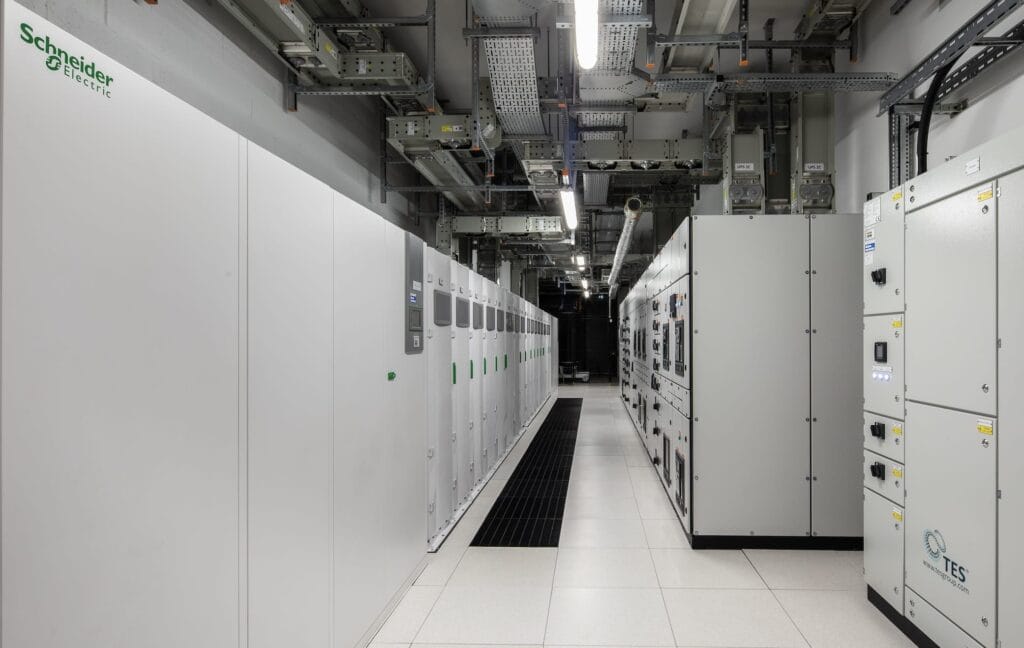The rapid technological evolution, led by Artificial Intelligence (AI) and hybrid IT solutions, is reshaping business strategies around technological infrastructure. According to Digital Realty, a global provider of data centers and colocationHousing facilities are a type of data center solutions (or housing), migration to shared data centers has solidified as a key solution against the limitations of traditional on-premises models.
The Rise of AI and Pressure on Data Centers
The demand for workloads associated with AI and Machine Learning (ML) has increased pressure on data centers, which must deal with unprecedented power density, higher connectivity requirements, and scalability challenges. Digital Realty emphasizes that colocation allows companies to address these needs by providing access to high-performance infrastructures specifically designed to support the demands of AI.
The market supports this: since 2020, the colocation data center sector in the United States has doubled in size, with a 30% increase in occupancy, according to recent data. This growth reflects how companies are migrating to more flexible and future-ready solutions.
Colocation: The Bridge Between Cloud and On-Premises
The colocation model combines the advantages of owned data centers with the benefits of cloud infrastructure, eliminating the need for companies to manage their own physical environments. This solution offers a strategic alternative that enables scaling operations, complying with specific regulations, and ensuring service continuity.
Among the most notable advantages of colocation, Digital Realty points out:
- Flexible and rapid scalability to meet changing demands.
- Availability assurance with uptime levels of 99.999%.
- Regulatory compliance, including data sovereignty laws.
- Low-latency connectivity with dedicated access to cloud service providers like AWS, Oracle Cloud, and Microsoft Azure.
- Optimized infrastructure for intensive workloads such as AI.
Furthermore, this solution reduces capital expenditure (CapEx) by migrating to a more predictable operational model based on operational expenses (OpEx).
Data Center Migration: A Growing Trend
Migrating to a colocation data centerA data center or data processing center involves transferring applications, hardware, and data from owned or third-party facilities to a shared environment. Digital Realty identifies three main migration approaches:
- Cloud Migration: Transferring workloads between cloud providers to optimize performance.
- Data Center Consolidation: Centralizing operations to reduce servers and enhance efficiency.
- Migration to Housing: Moving physical and virtual infrastructures to leverage connectivity and scalability of the shared environment.
AI Drives the Future of Colocation
The expansion of AI and ML is transforming the physical requirements of data centers, and colocation is emerging as the most suitable solution for companies needing to operate with high power densities. Colocation providers like Digital Realty already offer high-density capabilities, with an operating range of 50 to 150 kilowatts, ideal for intensive AI applications.
These capabilities allow not only for executing advanced models and use cases but also provide companies the ability to quickly scale their operations without compromising service quality.
Key Factors for Successful Migration
Digital Realty emphasizes that a successful migration depends on strategic planning that includes:
- Data Security: Implementing end-to-end encryption and robust access controls.
- Uptime Assurance: Designing redundant systems and preparing disaster recovery resources.
- Cost Management: Defining detailed budgets and calculating migration and operational costs.
- Regulatory Compliance: Verifying the provider’s capability to meet local and global regulations.
- Centralized Monitoring: Using infrastructure management tools to oversee performance in real-time.
Colocation: The Future of Digital Infrastructure
Digital Realty’s report concludes that migrating to colocation data centers is not only a response to current challenges but also lays the foundation for sustainable growth in an increasingly AI-driven business environment. This model allows companies to remain competitive, optimize costs, and meet the demands of a constantly evolving market.
In a context where technology is advancing at a breakneck pace, opting for colocation is more than an operational decision: it is a strategy to ensure continuity and innovation. As Digital Realty notes, “the future of digital infrastructure lies in colocation centers, where connectivity, scalability, and efficiency converge.”

